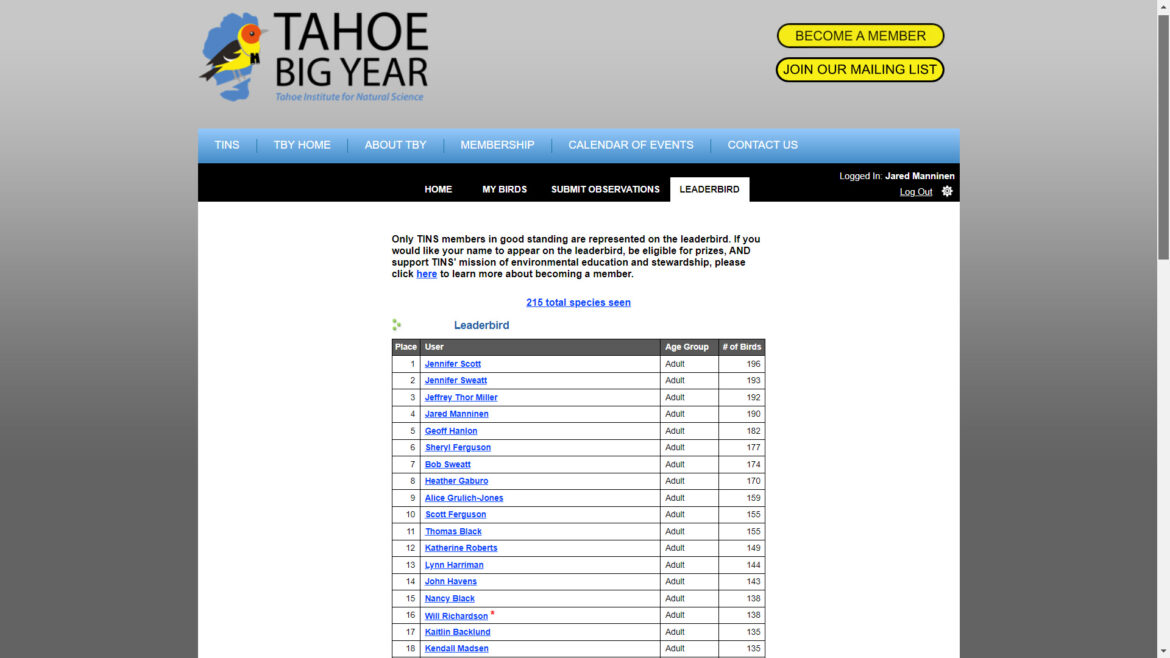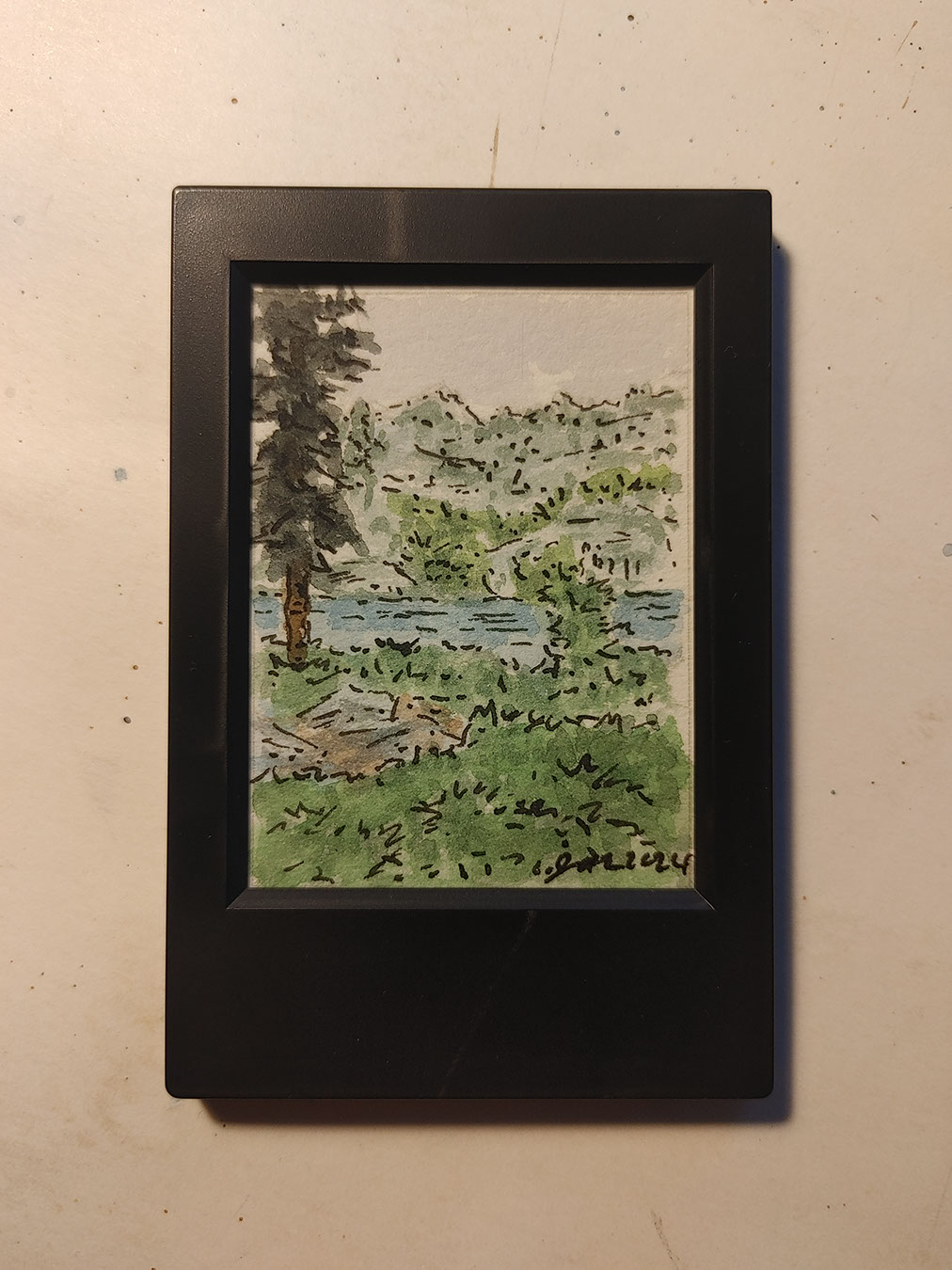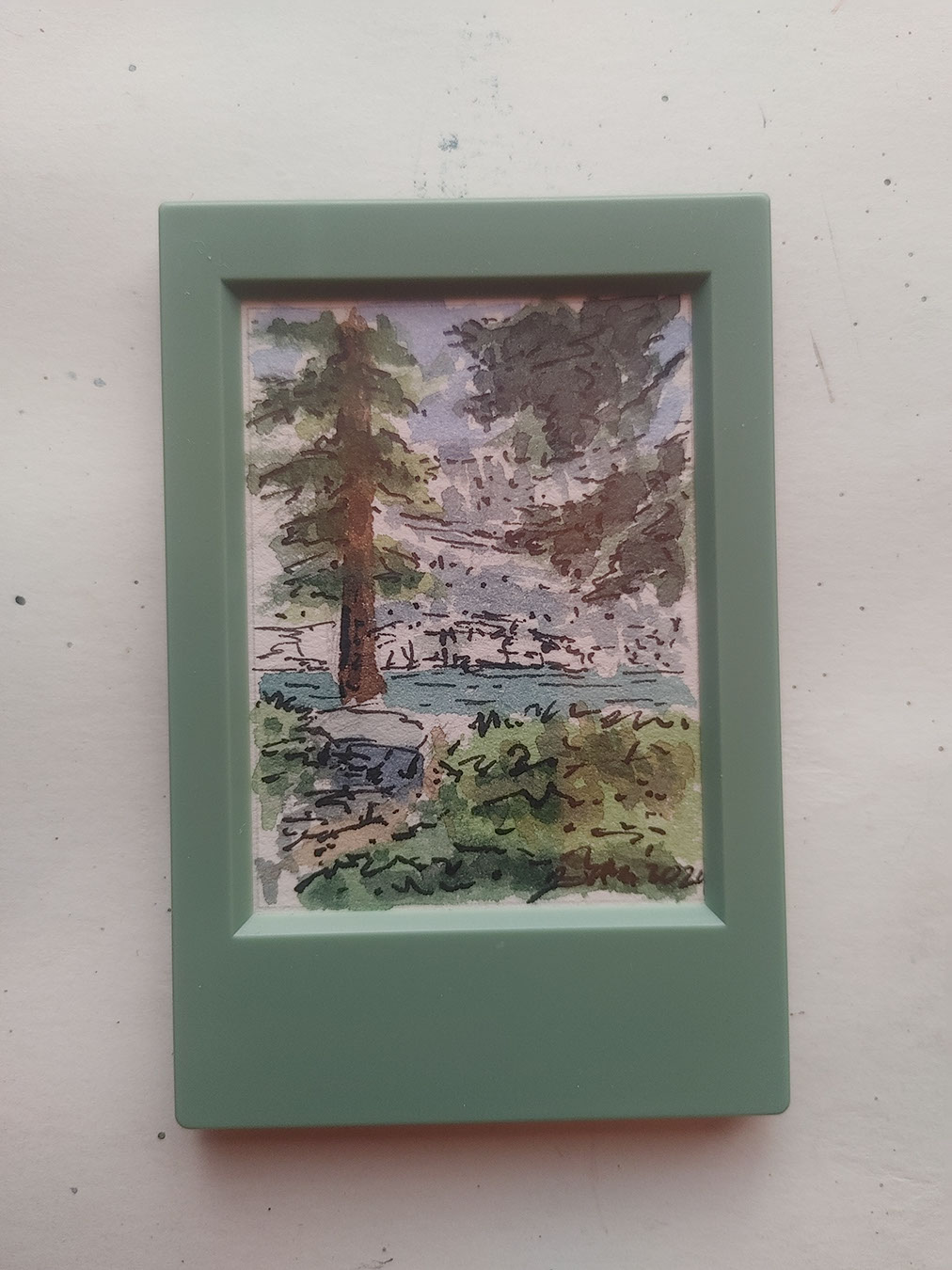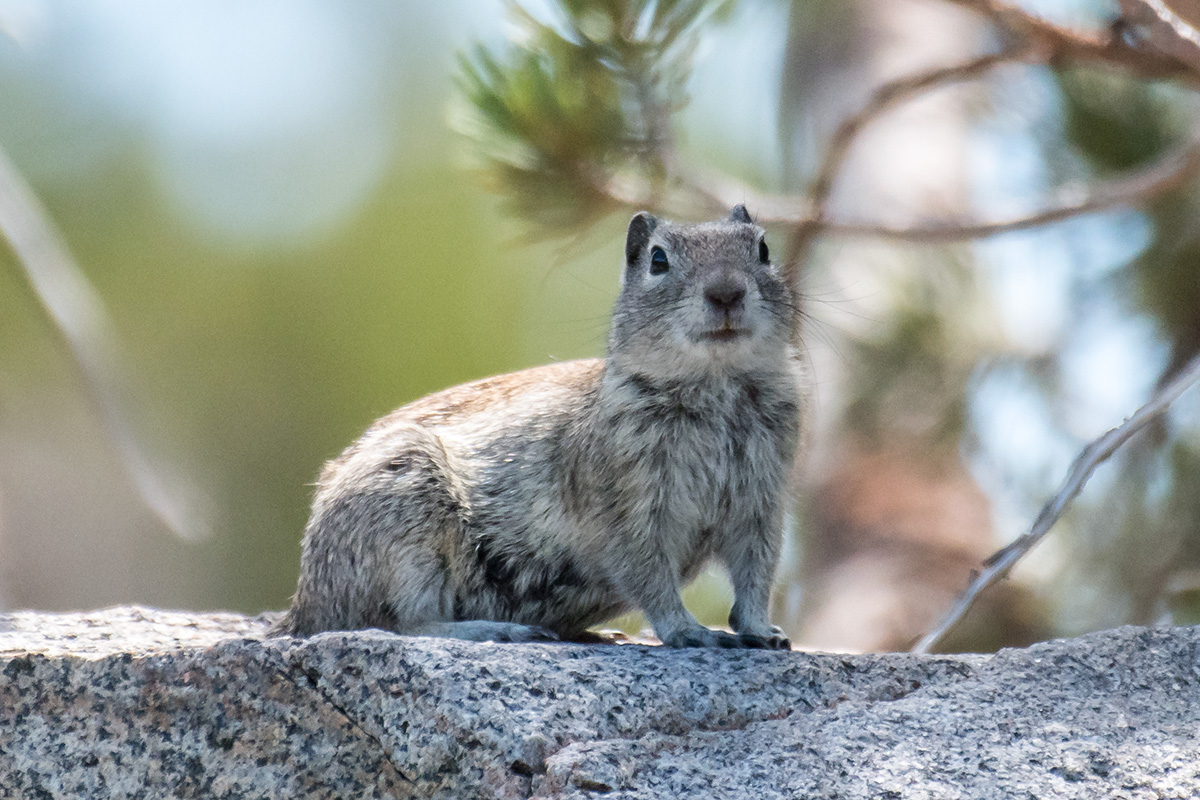Thoughts about…
Tahoe Big Year Update
I’ve had a lot of success finding and photographing birds during this year’s Tahoe Big Year. In fact, I feel great about my chances for achieving my target goal of 200+ bird species. That’s because, as of mid-August, I’ve already logged 192 birds. And we still have the entire fall migration during which we’ll find more!
As rewarding as it’s been, though, it hasn’t been without frustration and concern. Now, I’m not talking about being foiled by the occasional nemesis bird. That’s definitely happened more than once to me this year. But that type of challenge is naturally baked into the Big Year experience. No matter how avid a birder you are, for example, you’re never going to see every species that’s been documented by every participant. Besides, it would be ungrateful for me to complain about something like that considering how many new birds I’ve logged this year.
Rather, my frustration and concern stems from witnessing other birders and wildlife photographers exercising poor judgement and modeling unethical behavior in the field.
Before I go any further, just know that I’m not trying to turn this story into a complaint-fest, or to stand on my soap box espousing just how ethical I am. I’ve made mistakes. We all have. But I’m in the field with my camera a lot nowadays and, as a result, I’m seeing a lot more people out there with their optics. And what I’ve found is that I don’t really want to be associated with many of those people after seeing them in action. I’m not accusing them of being bad people. I’m just saying that our definitions of “do no harm” may be slightly different.
So by discussing some of these issues it helps me to better evaluate my own process of observing, studying, and documenting wildlife. And, obviously, I hope by sharing my concerns that you, too, will self-evaluate so that we can all be on the same page while enjoying nature.
One of the more memorable (for all the wrong reasons) scenes where I saw other birders and photographers exhibiting poor behavior occurred back in June.
On June 10th, 2024, a person conducted a point count in a tract of land in South Tahoe that houses a number of rustic, summer cabins. The area is accessible by Forest Service roads, but those roads are closed during the winter so I consider the location to be somewhat remote. Realistically, there’s few reasons for most people to travel through this area unless they’re accessing one of the cabins or one of the lesser known trailheads located within the tract.
For those of you unfamiliar with point counts, they’re defined by the USGS as “a tally of all birds detected by sight and sound by a single observer located at a fixed position during a specified period of time.” In this particular case, the observer discovered a Veery.
A Veery is a type of thrush that’s super rare for California. In fact, there are probably less than 20 legitimate records of the bird being documented in the entire state. That’s because its normal North American range is east of the Rockies and in the southern part of Canada. So once the notice went out that a Veery was confirmed to be in Tahoe, the alarms sounded within the regional birding community. As a result, birders from all over swarmed this little known tract of land.
I was actually driving home from work when I heard from a fellow TBYer about the Veery. As I’ve said many times before, I don’t like chasing other peoples’ birds for multiple reasons. However, I was already on the road and I was in a birding drought at the time so I was eager to log a new bird.
Honestly, I had no idea what a big deal this whole thing was going to be until it all began to play out in real-time. Since I didn’t have the exact coordinates (like everyone else who had received the official bird alert), I took my time searching for it, mostly just standing in the forest listening for its song. That’s one of the best parts of thrushes, after all, their beautiful, haunting songs.
Soon after arriving on scene, however, I saw three dudes straight-lining it through the forest. It was obvious that these guys with optics showing up at this out-of-the-way location wasn’t a coincidence. So, I followed them.
I quickly noticed that the “trail” in which we took was brand new. Like, the only reason it even existed was because every birder with the coordinates to that Veery had just carved it out that day. And this new trail ran right through what I would consider to be sensitive terrain. It was wet and marshy, making it an ideal habitat for unique plant species such as Brewer’s Mitrewort, Stream Violets, Alpine Enchanter’s-nightshade, Broad-lipped Twayblade, Sierra Bog Orchids, and Tiger Lilies. And, yes, I did see all of those wildflowers out there but, there we were, trampling all over them in pursuit of that Veery.
It’s not illegal to hike through this type of habitat and many would argue that, in this case, the ends justified the means. However, it still felt wrong to be charging straight through it. And, if you follow Leave No Trace principles, they definitely advise steering clear of walking through this non-durable type of terrain. So other than the one individual who performed the point count and needed to confirm that the Veery was, in fact, a Veery, under normal circumstances there wouldn’t be much reason for people to travel through that habitat. That is, I guess, unless they were specifically looking for one of the aforementioned plant species.
When I caught up with the three guys, I quickly determined that they weren’t interested in chatting. In fact, they seemed pretty annoyed that I was even there. So I just kept hiking in the same direction through the brush. At one point, I nearly had to crawl on all fours to negotiate the thick foliage. When I made it through, however, I found myself standing in relatively open forest on the backside of the observation location.
This area featured the more typical terrain in which I prefer to navigate when hiking off-trail. A forest floor covered with pine needles, branches, and other natural debris (aka duff). In this environment, it’s easy to avoid stepping on sensitive plants thanks to the stark contrast between the living and the dead.
Believe it or not, after spending just a few minutes walking around, I found an established hiking trail that contoured the backside of the Veery’s last known location. Since I didn’t have any confirmation that the bird was even still around, though, I decided to hike the trail a bit to see where it might lead. I didn’t travel far before finding a Pileated Woodpecker. I followed and photographed it for a few minutes, but then I had to remind myself that I was there for the Veery not the Pileated. So, I returned to the backside of the area where the Veery had been observed.
That’s when I heard it! The Veery, that is. I pulled out my phone and turned on the Merlin birding app to try and record and confirm its song. The weird thing, though, was that the song kept abruptly starting and stopping. After a minute or two of listening to this odd behavior, I realized that I was just hearing somebody else on the opposite side of that brush playing recall. This is when a person plays aloud a recording of a bird’s song hoping to draw it out. To the uninitiated this might seem like a great tactic to use when trying to locate birds. However, there’s a lot of ethical arguments against this practice.
The gist of those arguments is this, though. When you play a vocalization, it stresses out the bird because it makes it seem like there’s another of its kind in the immediate area. The playback could represent competition for its territory or indicate that a potential mate is nearby. If the bird is rare and out of its normal distribution range, such as this Veery, it’ll waste precious time and energy trying to locate the other bird. Or, rather, it’ll waste time chasing the audio recording of the bird when it should be resting and feeding so that it can get back on its correct course.
Anytime you do something to cause an animal to behave differently, it exposes them to potential predators. So maybe this bird, again, is tired from its long journey. It needs to rest, but it hears a similar bird through this playback so it pops out from its resting place and, therefore, exposes itself to unnecessary dangers.
Now, I do occasionally use playback while birding. However, I do so sparingly. Like, maybe I’ll broadcast the bird’s vocalizations for 10-15 seconds at most, once or twice. But that’s after spending an unsuccessful hour or so looking and listening for the bird in question. I only do this as a last resort to determine whether or not the bird is even around. I also only use playback when I’m alone or with maybe one or two other people. That, and just when we’re looking for a bird that’s known to be in an area but not a specifically rare bird in which an alert was sent.
This usually just looks like me hiking by myself at Carson Pass off-trail and at 9,000’, for example, hoping to run across some White-tailed Ptarmigan. Historically, Ptarmigan have been documented in this area but haven’t been seen in years. So the likelihood of affecting any bird with playback in that situation is very low. Again, I usually just use recall as a last ditch effort when I haven’t seen or heard any evidence of my target bird.
Considering all of this, I would hope that it’s obvious just how cruel it would be if the countless people who came from all over the state to find the Veery used audio playback to flush out the bird. That would just be messed up, right?
After waiting and listening for a few more minutes, I heard another uncommon bird. This time I believed that I was listening to a Northern Pygmy Owl. One of my favorites! This was great, I thought. If I wasn’t going to find a Veery, a Pygmy Owl sure would make for a great consolation prize. In the back of my mind, though, I was skeptical because, after all, what were the odds?
Well, the odds wound up being bad because although the vocalizations sounded similar they were definitely off. In fact, Merlin wouldn’t even confirm that they originated from a bird. The reason for this was because it wound up being a person mimicking the sound of a Pygmy Owl!
Northern Pygmy Owls are predators that feed on other birds, among many other things. So, I believe it was one of those same three guys I met earlier mimicking the Pygmy’s sounds in an effort to flush out the Veery through intimidation.
I agree that all’s fair in love and war, but this is just birding. There’s absolutely no reason that we should ever be implementing this type of extreme measure just to see a bird. But, hey, for a lot of people the ends do justify the means. That’s because, well, they just spent four hours in a car to get here. Or, they dropped $15k on a new mirrorless camera and lens. So they’re entitled to use any means necessary to find their bird, right?
Of course not.
At that point, I just had to leave.
I totally understand people traveling far and wide to see the Veery. It was a rare bird, after all, and to be one of the few who saw it would’ve been cool. But life goes on for those of us who didn’t get to bear witness. And it’s okay.
Now, full disclosure, I did return the following morning with some fellow TBYers. But we stuck to the established hiking trail that I previously found to minimize our impact. And, we basically just stood around listening for the Veery while being devoured by mosquitoes. We did hear it singing for a few minutes, but didn’t actually see it (so I couldn’t count it toward my Big Year). And, by the next day, it the Veery was long gone.
Realistically, this situation sounds par for the course any time there’s a sighting of a rare bird. It’s part of the culture, after all. That is, people making an effort to see rare birds. What shouldn’t be part of the culture, though, is the unethical methods people use in order to find those birds.
Honestly, I chalk all of that questionable and dubious behavior up to ignorance or, rather, the ignorance of the fact that in many situations we’re simply “loving a thing to death.” I agree that if one person does it, it’s probably not that big of a deal. But nowadays, thanks to social media and every other vehicle for sharing information our individual actions can ultimately have exponential consequences.
I’d never blame the person who found that Veery because they were literally just doing their job. But it’s undeniable that because of that single observation, that out-of-the-way and unknown location got absolutely smashed.
So let’s all do better so that we can continue to enjoy this thing called nature for many years to come, and enable everyone else to be able to do the same.
Another relatively slow-ish birding month. When you grind hard for numbers at the beginning of the year, it stands to reason that it’ll be a lot more difficult to find new species the further along you go into the year. I am looking forward to the fall migration, though, because September and October have the potential to be big months.
The current Tahoe Big Year standings are different than the screenshot below. So visit the official TBY website to see the current top 5 contenders.
My mini-painting project continues to go well. Essentially, I have to paint some new ones just about every other day because we keep selling out of them at the gift shop at my work 🙂
All summer I’ve been contemplating the idea of producing a series of roller ski-oriented YouTube videos. But before I even get to that point, I realized that I needed to talk more about the pros/cons of roller skiing.
In the case of this particular video, however, I mostly just discuss why you shouldn’t roller ski (until you become a really good xc skier). There are just so many drawbacks to roller skiing (if you’re not already an accomplished on-snow xc skier) that it’s hard for me to encourage anyone new to the sport to try it.
So if you’re on the fence about trying roller skiing, give this video a watch. Or, if you just wanna watch me yo-you back and forth on roller skis feel free to watch it too 🙂
Thanks for being a part of my life. Until next time…-Jared Manninen
Tahoe Trail Guide is an online resource for hiking, backpacking, cross-country skiing, and snowshoeing in the Lake Tahoe region. In addition to trail data, I offer backcountry “how-to” articles and information about the local and natural history of Tahoe. Tahoe Swag is a collection of art and design products I create based on my love of the outdoors and appreciation for Lake Tahoe and the surrounding Sierra Nevada Mountains.
If you like any of the images I post in these newsletters, please contact me. I’d be more than happy to upload them to my RedBubble account so that you can order prints and other merchandise featuring the images.
A Note about Patreon and PayPal…
Patreon is an online platform for providing financial support to creators who provide quality digital content that’s otherwise free. I offer various subscription tiers starting at $3. And all subscription tiers from $6 and up will receive original artwork after six consecutive months of contributions. The button directly below the Patreon button is a way in which to provide a one-time payment via PayPal (if subscriptions aren’t your thing).
My newsletters here on JaredManninen.com, the articles that I publish on Tahoe Trail Guide, and the videos I upload to YouTube will always be free. But if you’re interested in contributing to the health and longevity of my websites and YouTube channel, consider subscribing. Even a little goes a long way 🙂







































Comments (2)
“How’s that fitness level, Jared?”……..Enjoy reading your newsletter. Keep up the good work! From Minnesota, Gary Rettke
Hey Coach!
Thanks for the kind words, as always 🙂 As far as the current fitness level goes, well, I’m going to increase my activity once fall is in full swing. Doing these Big Years is just not great for burning calories or getting my heart rate up (which is why this’ll be the last that I do in earnest). But, overall, I’m probably in pretty good shape all things considered 😉
Hope you’ve been having a great summer!